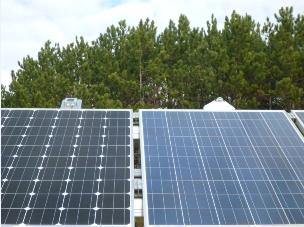Field Comparison of a Photovoltaic Reference Sensor and a Pyranometer
 Irradiance is a measure of the power contained within sunlight. It has units of watts per square metre (W/m2). A similar parameter, irradiation, is a measure of the energy contained within sunlight for a given time period. Irradiation has units of kWh/m2 and is determined by adding together irradiance measurements. Accurate measurements of these parameters are important in many photovoltaic (PV) applications. For example, the annual energy yield of a PV system is often estimated prior to installation and should the actual energy yield fall short of expectations, irradiance measurements can help to understand why. Both PV reference cells and pyranometers are commonly used instruments to measure solar irradiance, but they operate based on different principles and may be unequally affected by real-world conditions. This would include factors like irradiance spectra, incidence angle, ambient temperature, the rate of irradiance change, the rate of temperature change, or other parameters.
Irradiance is a measure of the power contained within sunlight. It has units of watts per square metre (W/m2). A similar parameter, irradiation, is a measure of the energy contained within sunlight for a given time period. Irradiation has units of kWh/m2 and is determined by adding together irradiance measurements. Accurate measurements of these parameters are important in many photovoltaic (PV) applications. For example, the annual energy yield of a PV system is often estimated prior to installation and should the actual energy yield fall short of expectations, irradiance measurements can help to understand why. Both PV reference cells and pyranometers are commonly used instruments to measure solar irradiance, but they operate based on different principles and may be unequally affected by real-world conditions. This would include factors like irradiance spectra, incidence angle, ambient temperature, the rate of irradiance change, the rate of temperature change, or other parameters.
This study compared the measurements of a PV reference cell and a pyranometer installed at the Living City Campus PV Testing Facility in Vaughan, Ontario, over a one year period. Measurements were compared on an hourly, daily, monthly and annual basis. The total annual difference in the irradiation measurements of the sensors was 5%. This was largely due to a linear calibration offset, but other issues, like incidence angle, zero-offset, and snow-shedding, caused larger differences at smaller timescales.
